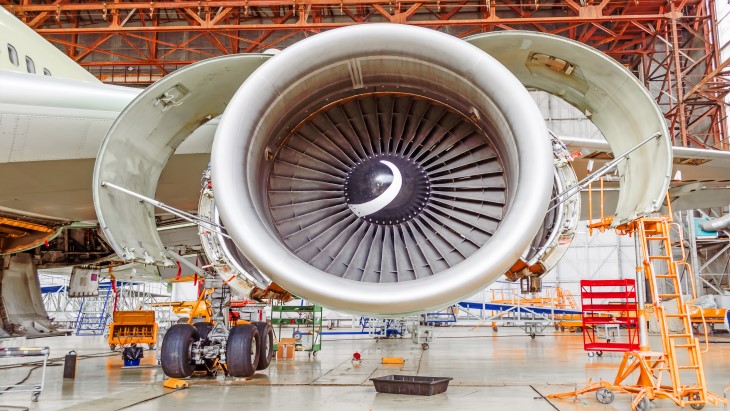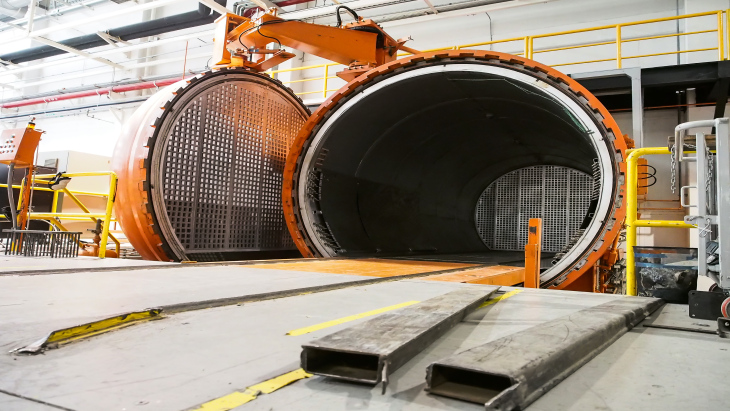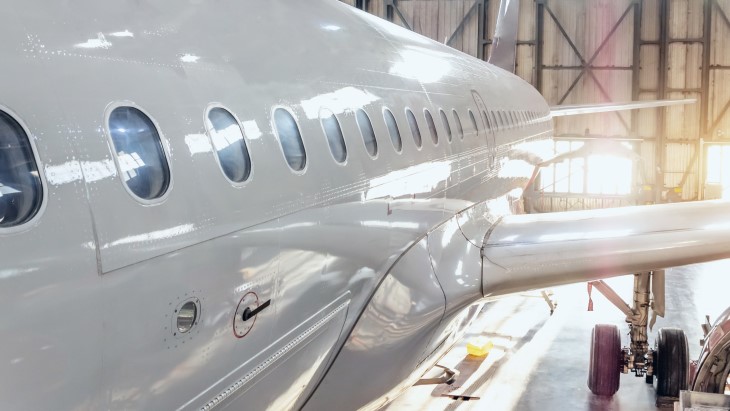Reach for the Sky: How to Optimize Aerospace Composite Manufacturing
In 2022, the estimated market size of the global aerospace plastics industry was $7.14 billion. On top of that, heightening demand for various aerospace structures manufactured out of composite materials is predicted to propel the continued growth of the industry. The increasing demand for the production of aerospace structures can be attributed to growing consumer demand for air travel following the COVID-19 pandemic. Additionally, as will be detailed further on, aerospace manufacturers have entered a period of production recovery and optimization.
Plastics manufacturing has found success in a number of industries due to the advantages brought on by the materials. Plastics, specifically plastic composite materials, are known to be lighter and more versatile in comparison to traditional materials such as aluminum and steel.
Throughout this article, we aim to break down several processes employed to manufacture composite structures for aerospace applications, touch upon several difficulties recently faced by aerospace manufacturers, and reveal how manufacturers can optimize their processes for greater efficiency and productivity.

Examples of Aerospace Composite Manufacturing Processes
Parts produced for aerospace applications typically need to have properties such as high strength-to-weight ratios and corrosion resistance to meet the demanding requirements of the aerospace industry, including weight and fuel efficiency, structural integrity, longevity, and safety. There are several processes that are commonly used in the industry to produce parts as such, one example being resin infusion and autoclave curing.
Resin Infusion and Autoclave Curing
Resin infusion is a composite manufacturing process that involves impregnating dry fiber reinforcements, such as carbon or glass fibers, with a liquid resin to create lightweight and durable composite materials.
Depending on the specific aerospace requirements and applications, different fibers can be selected for resin infusion. Carbon fibers are typically used in aerospace applications on account of their exceptional strength and lightweight properties. Additionally, epoxy resins are generally used for their thermal stability, mechanical properties, and great fiber/matrix bonding.
The resin infusion process begins with the arrangement of dry fibers into a preform. This arrangement is highly critical, as it influences the mechanical properties of the final composite part. The next step in the process is the careful placement of the dry fiber preform into a mold, which is then sealed to create an airtight environment.
A liquid resin is then sent through a network of tubes leading to the sealed mold. For the resin to adequately flow through the dry fiber reinforcement, a vacuum is applied to the mold to help distribute the resin and remove air. After the resin infiltrates the fibers, the entire mold is usually placed into an autoclave to cure the resin and solidify the composite material.
The Autoclave
An autoclave is a sealed chamber in which the contents are placed under controlled high-temperature and high-pressure conditions to cure materials, such as the resin mentioned above. Following a curing cycle, the autoclave slowly cools down. This controlled cooling phase is enacted to prevent thermal stress and maintain the structural integrity of the composite components.

New Process Considerations in Aerospace Manufacturing
Beyond resin infusion and autoclave curing, alternative processes have been under consideration for the production of composite aerospace parts. One such process is resin transfer molding (RTM), which is very similar to resin infusion in that both processes involve the permeation of dry fiber reinforcements with resin. However, they differ in the amount of pressure used, their control over resin distribution, and the applications they are best suited for. Resin infusion is often used to produce parts with complex shapes, but where precise fiber control is less critical. RTM is preferred for high precision and consistent resin distribution, thus making it suitable for the production of critical load-bearing parts.
RTM is a closed-mold, liquid composite molding process that injects resin into a mold with pre-formed dry reinforcement materials to produce composite parts. This process begins with the preparation of two mold halves designed to create the desired shape and dimensions of the final composite part. The dry reinforcement materials are precisely placed in one of the mold halves and are strategically layered to achieve the desired strength and performance characteristics. The two mold halves are then securely clamped to one another, thus enclosing the dry reinforcement materials within the mold cavity.
A liquid resin system is then injected through runners and gates into the mold under controlled pressure. The dry reinforcement materials are infiltrated by the resin to create a solid composite structure. To cure the resin, heat is applied to the mold contents. After the curing cycle is complete and the composite is hardened, the mold is opened, and the final composite part is demolded.
A Period of Difficulties and Instability
The use of plastics over metals and process evolutions, such as the introduction of RTM, in aerospace manufacturing hint at the industry’s innovation. Aerospace manufacturers have been pushing the bounds of aircraft efficiency, but these advancements have also been met with setbacks. For instance, the outbreak of the COVID-19 pandemic led to a number of difficulties that the industry is still reeling from.
Overall, the pandemic temporarily influenced a huge decrease in demand, supply chain interruptions, financial losses, and workforce detriments. The onset of the pandemic triggered a sudden and severe decline in global air travel. As a result of lockdowns, travel restrictions, and passenger reluctance to fly, numerous airlines slashed their fleets and cancelled new aircraft orders. All of this led to a cascading effect throughout the aerospace manufacturing supply chain, which caused delays, layoffs, and significant revenue losses for manufacturers.
As reported by McKinsey & Company, aviation manufacturers were burdened by a loss of 12 billion U.S. dollars in 2020. With airlines facing major financial disadvantages, less new orders were placed, and more deliveries were suspended or postponed.
This financial strain led manufacturers to reevaluate their production schedules and workforce numbers. The results were substantial layoffs and voluntary retirements, and many smaller manufacturing companies operating at a significantly reduced capacity or facing temporary closures. Consequently, there were large global supply chain disruptions, causing delays in critical component and material deliveries to aerospace manufacturers. This further exacerbated production challenges.
Following the alleviation of COVID-19 lockdowns and restrictions, demand for air travel began to rise. Accordingly, airlines resumed orders for new aircraft and production rates increased, thus spurring manufacturers into optimizing production processes to prepare for this onset of orders.

How to Optimize Aerospace Composite Manufacturing to Enhance Productivity and Efficiency
The onset of Industry 4.0 has prompted the development and enhancement of technologies designed to improve process efficiency and productivity. From robotics and automation to artificial intelligence and cloud computing, manufacturers now have access to a wealth of innovations to help enrich their processes.
One such innovation is sensXPERT Digital Mold with its combination of material characterization sensors, machine learning algorithms, and cloud computing technology to monitor, predict, and optimize plastics and composite manufacturing processes in real-time. The coming together of hardware, software, and data analytics has brought forth a solution that enables manufacturers to track live critical process parameters, such as degree of cure, glass transition temperature, viscosity, and flow front.
Furthermore, all collected process data is used train machine learning predictive models that forecast process outcomes to trigger the end of a process once certain quality criteria have been met. Besides the benefit of consistently reaching desired parameters, sensXPERT Digital mold achieves a decrease of up to 50% in existing scrap, an increase of up to 23% in energy savings, and up to 30% cycle time reduction. On the whole, this solution enables real-time process control to ensure that the processes remain efficient and productive.
By integrating sensXPERT Digital Mold into aerospace or aviation composite manufacturing processes, manufacturers will gain a digital thread per part produced, require less manual labor, increase quality control, and attain dynamic process adaptation. Therefore, their processes will be better prepared to take on the accumulating number of orders for aerospace structures.
If you are interested in learning more about the advantages of sensXPERT Digital Mold for the aviation industry, you can read our success story on ‘Digitizing Composites Manufacturing in the Aviation Industry’.